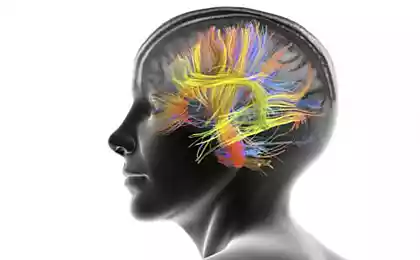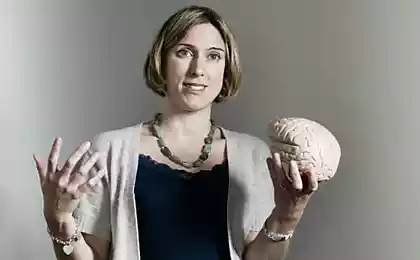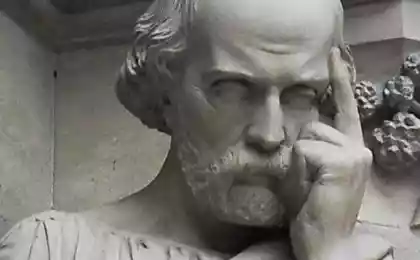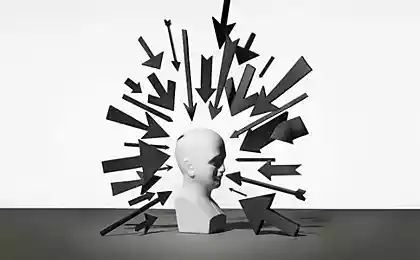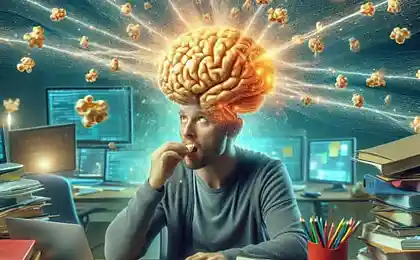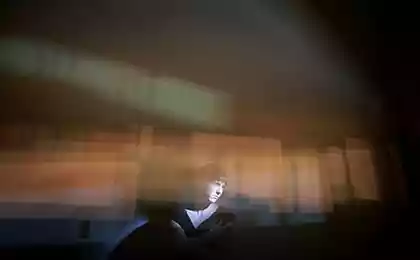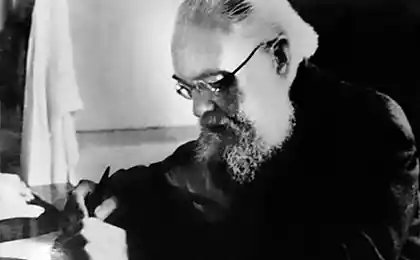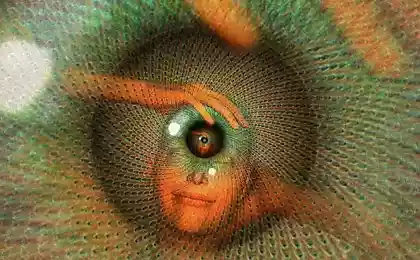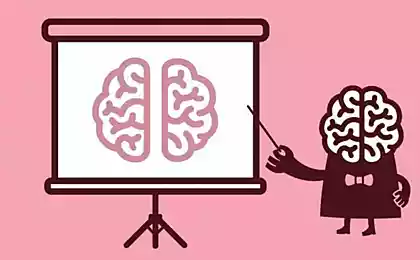638
Molineux task: to completely restore vision to the blind prevents the brain
"If a person born blind can touch to distinguish the shape of objects, such as a sphere and a cube, if he can, having the ability to see (but without the help of touch), to identify these objects using only the view, correlating them with his existing tactile representation? "It sounds Molineux task thought experiment formulated in 1688. Both the William Molyneux and John Locke, in a letter which he described this task, inclined towards a negative response.

Much of the information a sighted person receives through the eyes. Often we deliberately "deprive" itself of one of the agencies that are useful for orientation in space - stop up his ears headphones and listen to music, have fun. A man who lost his sight in conscious age, continues to think the usual categories for sighted - it is the image of what is happening, the brain creates them from the resulting information by other bodies. Those who are born blind, they see the world differently. If a man has lost sight present a holiday at sea, "seeing" the water and the sandy beach, the blind from birth feel the sand between your toes and the breeze on your skin, hear the sounds of the waves. Even after the restoration of the brains of these people are not immediately able to perceive certain objects and phenomena.
English surgeon and educator William Cheselden, who lived in the years 1688-1752, has invented a way to create an artificial pupil surgery for the treatment of certain forms of blindness. In 1728, he published a report about healing the 13-year-old gentleman who was blind from birth, from cataracts. When he first saw, he quickly figured out the colors scarlet and called his favorite. Black color seemed strange to him, and "undefined". But the boy could not judge the distance between themselves and the objects could not distinguish one thing from another and to recognize shapes of objects. It was the first confirmation that the Molineux problem has a negative answer.
Sidney Bradford, born in 1906, lost his sight at the age of 10 months. Through corneal transplant at the age of 52 years, Bradford received a vision. Immediately after the operation, he realized how long the show hours. It is easy to determine the distance to objects in the room, which previously was not possible to see objects. But a new world full of color and movement, intoxicated Bradford. He was afraid of the things that have not been able to understand, recognize people and objects that are perceived only by touch. Before surgery, Bradford worked as a shoemaker, and continued to work in the same place after the receipt of - but with his eyes closed. The only way he could identify the instruments.

Sidney Bradford
Michael Mei, a blind man to three years due poured kerosene on his eyes, his sight only 43. By the time he was the world record holder in speed slalom skiing among blind . He always was a sports guy, played football, got a master's degree in international affairs from Johns Hopkins University, became the head of the Sendero Group, a company engaged in GPS for the blind. And after receiving the vision in 1999, he could not recognize his wife. His eyes after the surgery, it is the very "iron", was supposed to give him perfect vision. But the brain can not process information as sighted people are treated. Once the descent on skis from the mountain, he realized that at high speed close to a huge object and can not overtake him. It turned out it was a shadow. He continues to use a cane, and calls himself "the blind man with vision."
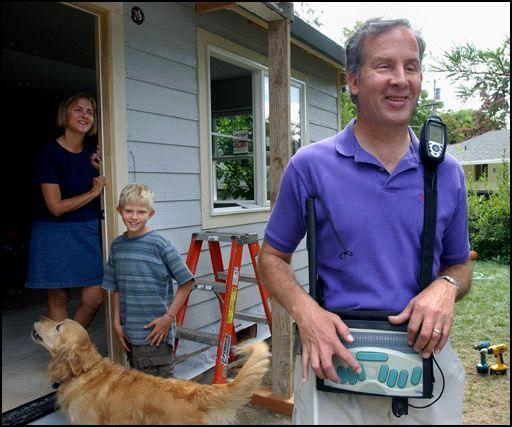
Michael Mei
About the next character, Shirley Jennings, in 1999 we made a film "at first sight" with Val Kilmer in the title role. For ten years because of the many diseases carried over for his life, he could only distinguish light from darkness. For him, it was very difficult after the operation to compare objects seen through the eyes of those to whom he touched. After he returned a lost eye at an early age, he became an artist.

Picture Shirley Jennings
People that we talked about, became blind at the age of ten years. What happens if people lose vision in a more conscious age? Shander Geria stopped seeing to 14 years. He writes that when a person is blind, it is the look of the other. Not touching the face or assessing the growth, but the voice and character. Geria studied, worked, married the woman he loves. Ten years after the wedding, he saw his wife for the first time. At that moment, when he opened his eyes, he immediately recognized her: "I see you" - this is his first words after the operation.

Shander Geria
Blind from birth or from an early age and received in conscious age vision of people do not understand why objects moving away from them, become smaller. This perception develops in the brain while we grow. To understand this much more difficult. People have seen agnosia - they are able to describe the features of objects, but can not recognize the subject completely. They find it hard to recognize people by their faces, including - in the mirror.
Recovery of sometimes plays cruel joke. Michael May after receiving continued use of a cane, Sidney Bradford was disappointed by what he saw: after the operation he was attracted by the bright colors, but the world is mainly composed of a dull tone. Total sighted lives for two years his body was exhausted, and then he died.
On the other hand, Shirl Jennings received a vision, was able to become an artist. Despite the complexity of understanding of the depth of the blind man and the display of three-dimensional objects on a plane, his brain was able to adapt enough that he began to study fine arts.
The cases described above show that the task Molineux has a negative answer. Immediately upon receipt of the former blind man is not define a ball and a cube, and only after some time with a high degree of probability will compare the brain visual and tactile information. Of course, much depends on age: children from India were more likely to complete the processing of visual information by the brain than the 52-year-old technician repairing shoes.
Research in 2014 from the University of Montreal confirms this. Specialists with the help of MRI followed the work of the brain of 50-year-old woman before and after surgery for an artificial cornea implantation. Eye surgery leads to a positive result, even in adulthood, after a lifetime of total blindness. But there is an important caveat - the brain, used to rely on rumor continued to process audio signals in the visual cortex, even seven months after the surgery. People who have lost their sight, even for a few months, including those due to accidents or disease, are unlikely to regain full vision due to irreversible changes in the structure of the visual centers of the brain. Like the skier Michael May, during normal operation, the "iron", "software" did not allow the patient to see clearly.
Source: geektimes.ru/post/278400/

Much of the information a sighted person receives through the eyes. Often we deliberately "deprive" itself of one of the agencies that are useful for orientation in space - stop up his ears headphones and listen to music, have fun. A man who lost his sight in conscious age, continues to think the usual categories for sighted - it is the image of what is happening, the brain creates them from the resulting information by other bodies. Those who are born blind, they see the world differently. If a man has lost sight present a holiday at sea, "seeing" the water and the sandy beach, the blind from birth feel the sand between your toes and the breeze on your skin, hear the sounds of the waves. Even after the restoration of the brains of these people are not immediately able to perceive certain objects and phenomena.
English surgeon and educator William Cheselden, who lived in the years 1688-1752, has invented a way to create an artificial pupil surgery for the treatment of certain forms of blindness. In 1728, he published a report about healing the 13-year-old gentleman who was blind from birth, from cataracts. When he first saw, he quickly figured out the colors scarlet and called his favorite. Black color seemed strange to him, and "undefined". But the boy could not judge the distance between themselves and the objects could not distinguish one thing from another and to recognize shapes of objects. It was the first confirmation that the Molineux problem has a negative answer.
Sidney Bradford, born in 1906, lost his sight at the age of 10 months. Through corneal transplant at the age of 52 years, Bradford received a vision. Immediately after the operation, he realized how long the show hours. It is easy to determine the distance to objects in the room, which previously was not possible to see objects. But a new world full of color and movement, intoxicated Bradford. He was afraid of the things that have not been able to understand, recognize people and objects that are perceived only by touch. Before surgery, Bradford worked as a shoemaker, and continued to work in the same place after the receipt of - but with his eyes closed. The only way he could identify the instruments.

Sidney Bradford
Michael Mei, a blind man to three years due poured kerosene on his eyes, his sight only 43. By the time he was the world record holder in speed slalom skiing among blind . He always was a sports guy, played football, got a master's degree in international affairs from Johns Hopkins University, became the head of the Sendero Group, a company engaged in GPS for the blind. And after receiving the vision in 1999, he could not recognize his wife. His eyes after the surgery, it is the very "iron", was supposed to give him perfect vision. But the brain can not process information as sighted people are treated. Once the descent on skis from the mountain, he realized that at high speed close to a huge object and can not overtake him. It turned out it was a shadow. He continues to use a cane, and calls himself "the blind man with vision."

Michael Mei
About the next character, Shirley Jennings, in 1999 we made a film "at first sight" with Val Kilmer in the title role. For ten years because of the many diseases carried over for his life, he could only distinguish light from darkness. For him, it was very difficult after the operation to compare objects seen through the eyes of those to whom he touched. After he returned a lost eye at an early age, he became an artist.

Picture Shirley Jennings
People that we talked about, became blind at the age of ten years. What happens if people lose vision in a more conscious age? Shander Geria stopped seeing to 14 years. He writes that when a person is blind, it is the look of the other. Not touching the face or assessing the growth, but the voice and character. Geria studied, worked, married the woman he loves. Ten years after the wedding, he saw his wife for the first time. At that moment, when he opened his eyes, he immediately recognized her: "I see you" - this is his first words after the operation.

Shander Geria
Blind from birth or from an early age and received in conscious age vision of people do not understand why objects moving away from them, become smaller. This perception develops in the brain while we grow. To understand this much more difficult. People have seen agnosia - they are able to describe the features of objects, but can not recognize the subject completely. They find it hard to recognize people by their faces, including - in the mirror.
Recovery of sometimes plays cruel joke. Michael May after receiving continued use of a cane, Sidney Bradford was disappointed by what he saw: after the operation he was attracted by the bright colors, but the world is mainly composed of a dull tone. Total sighted lives for two years his body was exhausted, and then he died.
On the other hand, Shirl Jennings received a vision, was able to become an artist. Despite the complexity of understanding of the depth of the blind man and the display of three-dimensional objects on a plane, his brain was able to adapt enough that he began to study fine arts.
The cases described above show that the task Molineux has a negative answer. Immediately upon receipt of the former blind man is not define a ball and a cube, and only after some time with a high degree of probability will compare the brain visual and tactile information. Of course, much depends on age: children from India were more likely to complete the processing of visual information by the brain than the 52-year-old technician repairing shoes.
Research in 2014 from the University of Montreal confirms this. Specialists with the help of MRI followed the work of the brain of 50-year-old woman before and after surgery for an artificial cornea implantation. Eye surgery leads to a positive result, even in adulthood, after a lifetime of total blindness. But there is an important caveat - the brain, used to rely on rumor continued to process audio signals in the visual cortex, even seven months after the surgery. People who have lost their sight, even for a few months, including those due to accidents or disease, are unlikely to regain full vision due to irreversible changes in the structure of the visual centers of the brain. Like the skier Michael May, during normal operation, the "iron", "software" did not allow the patient to see clearly.
Source: geektimes.ru/post/278400/
Pokemonomaniya the service of bank marketing
SAW robot crawls, climbs and swims with only one engine




